Source
Tuesday, January 29, 2013
Sunday, January 20, 2013
What is Lunar X?
What is Lunar X

Lunar X via Raven Yu, January 19, 2013
Alien visitation? No. Lunar X is an example of how lighting and topography can combine to produce a pattern that seems familiar to the human eye.
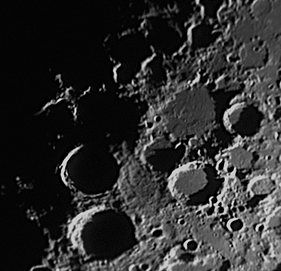
Ron Bee photo of Lunar X on November 17, 2007.
Lunar X is a famous optical feature on the moon, visible through telescopes. When the terminator – or line between light and dark on the moon – is located in just the right place, it appears as the letter X on the moon’s surface. A sign of an alien visitation? No. Lunar X is a great example of how lighting and topography can combine on a planet or moon to produce a pattern that seems familiar to the human eye. In reality, the illusion of Lunar X is created by sunlight falling on the rims/ridges between the craters La Caille, Blanchinus, and Purbach.
In the case of Lunar X, the pattern repeats at each cycle of the moon, but only for a short time. The X is observable for about 4 hours around the first quarter moon phase.
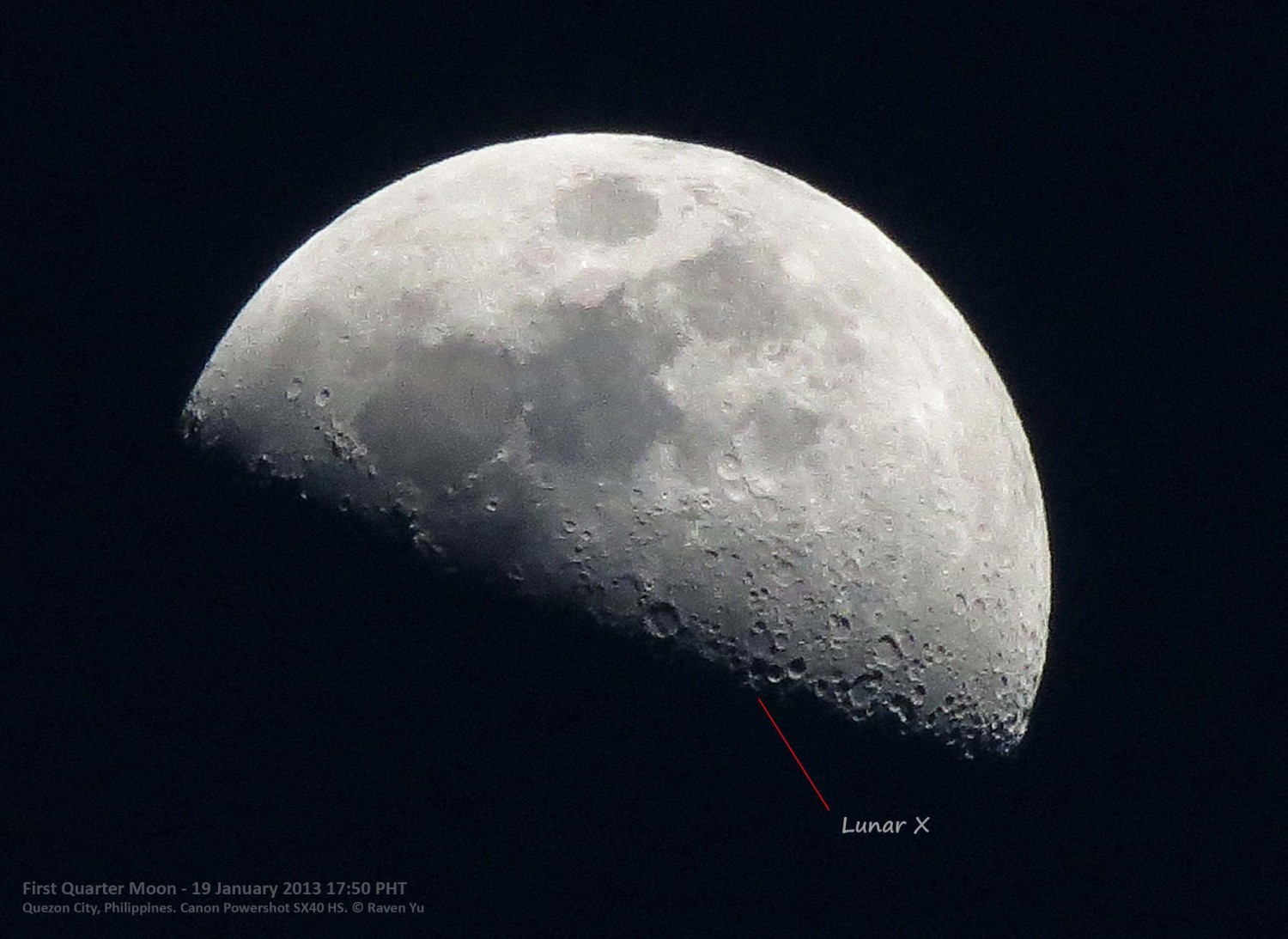
EarthSky Facebook friend Raven Yu in Quezon City, Philippines took this photo of Lunar X on January 19, 2013. Thank you, Raven! View larger.
Bottom line: Lunar X is an optical feature on the moon, an apparent X on the moon’s surface, visible through telescopes. It’s caused by sunlight falling on the rims/ridges between the craters La Caille, Blanchinus, and Purbach.
source
In the case of Lunar X, the pattern repeats at each cycle of the moon, but only for a short time. The X is observable for about 4 hours around the first quarter moon phase.

EarthSky Facebook friend Raven Yu in Quezon City, Philippines took this photo of Lunar X on January 19, 2013. Thank you, Raven! View larger.
Bottom line: Lunar X is an optical feature on the moon, an apparent X on the moon’s surface, visible through telescopes. It’s caused by sunlight falling on the rims/ridges between the craters La Caille, Blanchinus, and Purbach.
source
Earth is undergoing true polar wander, scientists say
Earth is undergoing true polar wander, scientists say
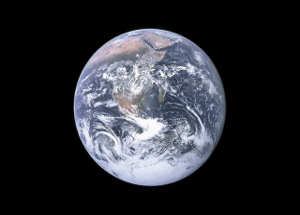
Scientists developed a computer model to identify four possible instances of true polar wander in the past. And, they say, true polar wander is happening now.

DOWNLOAD❘EMBED
In late 2012, scientists based in Germany and Norway published new results about a geophysical theory known as true polar wander. That is a drifting of Earth’s solid exterior – an actual change in latitude for some land masses – relative to our planet’s rotation axis. These scientists used hotspots in Earth’s mantle as part of a computer model, which they say is accurate for the past 120 million years, to identify four possible instances of true polar wander in the past. And, they say, true polar wander is happening now. These scientists published their results in the Journal for Geophysical Research.
The scientists – including Pavel V. Doubrovine and Trond H. Torsvik of the University of Oslo, and Bernhard Steinberger of the Helmholtz Center in Potsdam, Germany – established what they believe is a stable reference frame for tracking true polar wander. Based on this reference frame, they say that twice – from 90 to 40 million years ago – the solid Earth traveled back and forth by nearly 9 degrees with respect to our planet’s axis of rotation. What’s more, for the past 40 million years, the Earth’s solid outer layers have been slowly rotating at a rate of 0.2 degrees every million years, according to these scientists.
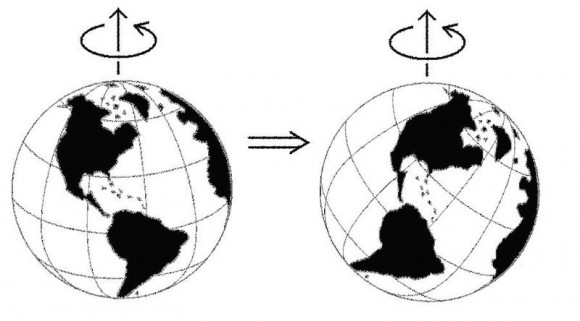
Diagram showing solid-body rotation of the Earth with respect to a stationary spin axis due to true polar wander. This diagram is greatly exaggerated. According to Doubrovine and his team, Earth’s solid outer layers have been slowly rotating at a rate of 0.2 degrees every million years. Diagram via Wikimedia Commons.

Scientists developed a computer model to identify four possible instances of true polar wander in the past. And, they say, true polar wander is happening now.

DOWNLOAD❘EMBED
In late 2012, scientists based in Germany and Norway published new results about a geophysical theory known as true polar wander. That is a drifting of Earth’s solid exterior – an actual change in latitude for some land masses – relative to our planet’s rotation axis. These scientists used hotspots in Earth’s mantle as part of a computer model, which they say is accurate for the past 120 million years, to identify four possible instances of true polar wander in the past. And, they say, true polar wander is happening now. These scientists published their results in the Journal for Geophysical Research.
The scientists – including Pavel V. Doubrovine and Trond H. Torsvik of the University of Oslo, and Bernhard Steinberger of the Helmholtz Center in Potsdam, Germany – established what they believe is a stable reference frame for tracking true polar wander. Based on this reference frame, they say that twice – from 90 to 40 million years ago – the solid Earth traveled back and forth by nearly 9 degrees with respect to our planet’s axis of rotation. What’s more, for the past 40 million years, the Earth’s solid outer layers have been slowly rotating at a rate of 0.2 degrees every million years, according to these scientists.

Diagram showing solid-body rotation of the Earth with respect to a stationary spin axis due to true polar wander. This diagram is greatly exaggerated. According to Doubrovine and his team, Earth’s solid outer layers have been slowly rotating at a rate of 0.2 degrees every million years. Diagram via Wikimedia Commons.
True polar wander is not:
A geomagnetic reversal, or reversal of Earth’s magnetic field, known to have happened before in Earth history.
Plate tectonics, which describes the large-scale motions of great land plates on Earth and is thought to be driven by the circulation of Earth’s mantle.
Precession of the Earth, whereby our world’s axis of rotation slowly moves, tracing out a circle among the stars, causing the identity of our North Star changes over time.
True polar wander is a geophysical theory, a way of thinking about Earth processes that might happen and that these scientists believe do happen. The theory suggests that if an object of sufficient weight on Earth – for example, a supersized volcano or other weighty land mass – formed far from Earth’s equator, the force of Earth’s rotation would gradually pull the object away from the axis around which Earth spins. A supersized volcano far from Earth’s equator would create an imbalance, in other words. As explained at Princeton.edu:
If the volcanoes, land and other masses that exist within the spinning Earth ever became sufficiently imbalanced, the planet would tilt and rotate itself until this extra weight was relocated to a point along the equator.
That’s the theory of true polar wander. It would cause a movement of Earth’s land masses, but for a different reason than the reason the continents drift in the theory of plate tectonics (formerly called “continental drift”). In the theory of plate tectonics, the continents drift because the layer of Earth underlying our planet’s crust, called the mantle, is convective. That is, it circulates, slowly – like water about to boil. In true polar wander, on the other hand, a similar-seeming movement of land masses on Earth’s crust happens in order to correct an imbalance of weight with respect to Earth’s spin.
Scientists’ understanding of true polar wander overlaps with their understanding of plate tectonics in various ways. That’s understandable, since it’s all the same Earth.
Scientists delving into true polar wander want to know when, in which direction, and at what rate the Earth’s solid exterior might be rotating due to true polar wander. To sort it out, they say, you would need a stable frame of reference to which observations of relative motion might be compared. Doubrovine and his team say they found one: volcanic hotspots.

Hotspot forming an island chain. As land plates drift, a successive of volcanoes form over the hotspot. Image via Wikimedia Commons.
In geology, hotspots are volcanic regions fed by Earth’s underlying mantle. For example, the Hawaiian islands are believed to have formed over a hotspot in the mantle. The hotspot created a volcano, but then – as that land plate drifted over time, as described by the theory of plate tectonics – the volcano drifted, too, and was eventually cut off from the hotspot. Gradually, another volcano begins to form over the hotspot, right next to the first one. And then it moves on … and another one forms … and so on … and so on. Earth’s crust produces first one, then another volcano over the hotspot until a long chain of volcanoes forms, such as in Hawaii. Hotspots have long been used to understand the motion of tectonic plates.
Doubrovine and colleagues went a step further in order to understand true polar wander. Instead of treating the hot spots as static – frozen in place at one spot above Earth’s mantle – their computer model let the hotspots’ positions drift slowly. According to these scientists, this drifting is what produced a model of a stable reference frame, which in turn let them draw conclusions about true polar wander.
They say their model does a good job of matching observations of real hotspot tracks on Earth – the path drawn by each hotspot’s island chain – which gives them confidence their results about true polar wander are accurate.

The Hawaiian islands are believed to have formed over a hotspot – a particularly hot place in Earth’s underlying mantle. Scientists expanded on previous thinking about hotspots to suggest that Earth’s solid surface is drifting, minutely, with respect to our planet’s rotation axis.
Bottom line: German and Norwegian scientists have incorporated hotspots in Earth’s mantle into a computer model being used to study true polar wander. They say their work established a stable reference frame for this study that lets them conclude Earth is undergoing true polar wander today.
Read the original paper: Absolute plate motions in a reference frame defined by moving hot spots in the Pacific, Atlantic and Indian oceans
A geomagnetic reversal, or reversal of Earth’s magnetic field, known to have happened before in Earth history.
Plate tectonics, which describes the large-scale motions of great land plates on Earth and is thought to be driven by the circulation of Earth’s mantle.
Precession of the Earth, whereby our world’s axis of rotation slowly moves, tracing out a circle among the stars, causing the identity of our North Star changes over time.
True polar wander is a geophysical theory, a way of thinking about Earth processes that might happen and that these scientists believe do happen. The theory suggests that if an object of sufficient weight on Earth – for example, a supersized volcano or other weighty land mass – formed far from Earth’s equator, the force of Earth’s rotation would gradually pull the object away from the axis around which Earth spins. A supersized volcano far from Earth’s equator would create an imbalance, in other words. As explained at Princeton.edu:
If the volcanoes, land and other masses that exist within the spinning Earth ever became sufficiently imbalanced, the planet would tilt and rotate itself until this extra weight was relocated to a point along the equator.
That’s the theory of true polar wander. It would cause a movement of Earth’s land masses, but for a different reason than the reason the continents drift in the theory of plate tectonics (formerly called “continental drift”). In the theory of plate tectonics, the continents drift because the layer of Earth underlying our planet’s crust, called the mantle, is convective. That is, it circulates, slowly – like water about to boil. In true polar wander, on the other hand, a similar-seeming movement of land masses on Earth’s crust happens in order to correct an imbalance of weight with respect to Earth’s spin.
Scientists’ understanding of true polar wander overlaps with their understanding of plate tectonics in various ways. That’s understandable, since it’s all the same Earth.
Scientists delving into true polar wander want to know when, in which direction, and at what rate the Earth’s solid exterior might be rotating due to true polar wander. To sort it out, they say, you would need a stable frame of reference to which observations of relative motion might be compared. Doubrovine and his team say they found one: volcanic hotspots.

Hotspot forming an island chain. As land plates drift, a successive of volcanoes form over the hotspot. Image via Wikimedia Commons.
In geology, hotspots are volcanic regions fed by Earth’s underlying mantle. For example, the Hawaiian islands are believed to have formed over a hotspot in the mantle. The hotspot created a volcano, but then – as that land plate drifted over time, as described by the theory of plate tectonics – the volcano drifted, too, and was eventually cut off from the hotspot. Gradually, another volcano begins to form over the hotspot, right next to the first one. And then it moves on … and another one forms … and so on … and so on. Earth’s crust produces first one, then another volcano over the hotspot until a long chain of volcanoes forms, such as in Hawaii. Hotspots have long been used to understand the motion of tectonic plates.
Doubrovine and colleagues went a step further in order to understand true polar wander. Instead of treating the hot spots as static – frozen in place at one spot above Earth’s mantle – their computer model let the hotspots’ positions drift slowly. According to these scientists, this drifting is what produced a model of a stable reference frame, which in turn let them draw conclusions about true polar wander.
They say their model does a good job of matching observations of real hotspot tracks on Earth – the path drawn by each hotspot’s island chain – which gives them confidence their results about true polar wander are accurate.

The Hawaiian islands are believed to have formed over a hotspot – a particularly hot place in Earth’s underlying mantle. Scientists expanded on previous thinking about hotspots to suggest that Earth’s solid surface is drifting, minutely, with respect to our planet’s rotation axis.
Bottom line: German and Norwegian scientists have incorporated hotspots in Earth’s mantle into a computer model being used to study true polar wander. They say their work established a stable reference frame for this study that lets them conclude Earth is undergoing true polar wander today.
Read the original paper: Absolute plate motions in a reference frame defined by moving hot spots in the Pacific, Atlantic and Indian oceans
Does Earth have a second moon?
Does Earth have a second moon?

Celestial software image of Earth with two moons,.
Mars has two moons, Jupiter has 66, Saturn 62, Uranus 27, Neptune 13. But our planet Earth has just one moon. Doesn’t it?
Many planets in our solar system have more than one moon. Mars has two moons, Jupiter has 66, Saturn 62, Uranus 27, Neptune 13. Those numbers keep changing, and you can see a relatively current count of solar system moons here from NASA’s Jet Propulsion Laboratory. But our planet Earth has just one moon. Doesn’t it?
Moons are defined as Earth’s natural satellites. They orbit around the Earth. And, in fact, although Earth sometimes has more than one moon, some objects you might have heard called Earth’s second moon aren’t, really. Let’s talk about some non-moons first.

Image of Earth with two moons, generated in Celestia software, by Grebenkov in Wikimedia Commons.

3753 Cruithne in 2001. Astronomer Duncan Waldron discovered this faint asteroid on October 10, 1986, on a photographic plate taken with the UK Schmidt Telescope at Siding Spring Observatory in Australia. Image via Sonia Keys via Wikimedia Commons.

The orbits around the sun of Cruithne and Earth over the course of a year (from September 2007 to August 2008). More information about this animation here.
Quasi-satellites are not second moons for Earth. A quasi-satellite is an object in a co-orbital configuration with Earth (or another planet). Scientists would say there is a 1:1 orbital resonancebetween Earth and this object. In other words, a quasi-satellite is orbiting the sun, just as Earth is. Its orbit around the sun takes exactly the same time as Earth’s orbit, but the shape of the orbit is slightly different.
The most famous quasi-satellite in our time – and an object you might have heard called a second moonfor Earth – is 3753 Cruithne. This object is five kilometers – about three miles – wide. Notice it has an asteroid name. That’s because it is an asteroid orbiting our sun, one of several thousand asteroids whose orbits cross Earth’s orbit. Astronomers discovered Cruithne in 1986, but it wasn’t until 1997 that they figured out its complex orbit. It’s not a second moon for Earth; it doesn’t orbit Earth. But Cruithne is co-orbiting the sun with Earth. Like all quasi-satellites, Cruithne orbits the sun once for every orbit of Earth.

As seen from Earth Cruithne has what is known as a horseshoe orbit. In other words, viewed from Earth, it appears to orbit a point beside Earth. More information about horseshoe orbits here.
Earth’s gravity affects Cruithne, in such a way that Earth and this asteroid return every year to nearly the same place in orbit relative to each other. However, Cruithne won’t collide with Earth, because its orbit is very inclined with respect to ours. It moves in and out of the plane of the ecliptic, or plane of Earth’s orbit around the sun.
Orbits like that of Cruithne aren’t stable. Computer models indicate that Cruithne will spend another only another 5,000 years or so in its current orbit. That’s a blink on the long timescale of our solar system. The asteroid might then move into true orbit around Earth for a time, at which time it wouldbe a second moon – but not for long. Astronomers estimate that, after 3,000 years orbiting Earth, Cruithne would escape back into orbit around the sun.
By the way, Cruithne isn’t the only quasi-satellite in a 1:1 resonance orbit with Earth. The objects 2010 SO16 and (277810) 2006 FV35, among others, are also considered quasi-satellites to Earth.
These objects are not second moons for Earth, although sometimes you might hear people mistakenly say they are. Does Earth ever have more than one moon? Surprisingly (or not), the answer is yes.
Read the history of the search for Earth’s second moon here.

Asteroids that are captured temporarily by Earth's gravity have crazy orbits around us, because they're pulled from all sides by the Earth, sun and moon. Image Credit: K. Teramuru, UH Ifa
Earth does sometimes have temporary moons. In March of 2012, astronomers at Cornell University published the result of a computer study, suggesting suggesting that asteroids orbiting the sun might temporarily become natural satellites of Earth. In fact, they said, Earth usually has more than one temporary moon, which they called minimoons. These astronomers said the minimoons would follow complicated paths around Earth for a time, as depicted in the images above and below. Eventually, they would break free of Earth’s gravity – only to be immediately recaptured into orbit around the sun, becoming an asteroid once more. The little moons envisioned by these astronomers might typically be only a few feet across and might orbit our planet for less than a year before going back to orbit the sun as asteroids.
Read more here: Earth usually has more than one moon
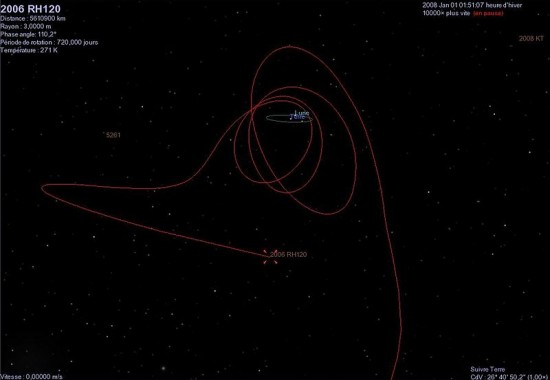
Diagram of the orbit for 2006 RH120 during a period of time that it is orbiting the Earth during a temporary satellite capture event. Image via Wikimedia Commons.
Have astronomers detected any of these minimoons? Yes. Writing in the magazine Astronomyin December 2010, Donald Yeomans (Manager of NASA’s Near-Earth Object Program Office at NASA’s Jet Propulsion Laboratory) described an object discovered in 2006 that appears to fit that description. The object – now designated 2006 RH120 – is estimated to be 5 meters (about 15 feet) in diameter. Yeomans said that, when this object was discovered in a near-polar orbit around Earth, it was thought at first to be a third stage Saturn S-IVB booster from Apollo 12, but later determined to be an asteroid. 2006 RH120 began orbiting the sun again 13 months after its discovery, but it’s expected to sweep near Earth and be re-captured as a minimoon by Earth’s gravity later in this century.
Bottom line: That asteroid called 3753 Cruithne is not a second moon for Earth, but its orbit around the sun is so strange that you still sometimes hear people say it is. Meanwhile, astronomers publishing in March of 2012 suggested that Earth does frequently capture asteroids, which might orbit our world for about a year before breaking free of Earth’s gravity and orbiting the sun once more.
source
Celestial Wonder Looks Uncannily Like a Manatee
A watery-looking nebula in deep space is being renamed after the sea creature it strongly resembles: a manatee.
The nebula is the leftovers from a star that died in a supernova explosion about 20,000 years ago. Before it died, the giant star puffed out its outer gaseous layers, which now swirl in green-and-blue clouds around the dead hulk of the star, which has collapsed into a black hole.
Known officially as W50, the celestial object is being dubbed the Manatee Nebula by the National Radio Astronomy Observatory (NRAO), during a ceremony today (Jan. 19) at the Florida Manatee Festival in Crystal River, Fla. The NRAO will also unveil a new photo of the nebula taken by the Very Large Array (VLA) radio telescope network in New Mexico.
"When the VLA's giant W50 image reached the NRAO director's office, Heidi Winter, the director's executive assistant, saw the likeness to a manatee, the endangered marine mammals known as 'sea cows' that congregate in warm waters in the southeastern United States," NRAO officials wrote in a statement."
At Winter's suggestion, NRAO decided to collaborate with the U.S. Fish and Wildlife Service to confer the new nickname on the nebula. [Gallery: Strange Nebula Shapes, What Do You See?]
Manatees are huge mammals that average about 10 feet (3 meters) long and tend to weigh over 1,000 pounds (450 kilograms). These gentle giants propel themselves with flippers, and spend up to eight hours a day munching on sea plants.
The new photo shows the manatee nebula seemingly mimicking a trademark pose of the animal, which is often seen floating on its back, with flippers crossed over belly.
Manatees are endangered, in part because boat propellers often cut deep gashes into the herbivores' sides, injuring or killing many manatees every year. The nebula, too, bears streaky scars carved out by particles in the two protruding jets emitting from the black hole at its core.
Crystal River Refuge, established in 1983 to protect the endangered West Indian manatee, is the home of the largest natural concentration of manatees in Florida.
The Manatee Nebula, which lies 18,000 light-years away in the constellation of Aquila, isn't the only celestial object named after an Earthly creature: It is joined in the cosmos by the Crab Nebula, the Eagle Nebula, and the Pelican Nebula, among others.
Follow Clara Moskowitz on Twitter @ClaraMoskowitz or SPACE.com @Spacedotcom. We're also onFacebook & Google+.
50 Fabulous Deep-Space Nebula Photos
Image Gallery: Endangered & Threatened Wildlife
Planetary Nebula: Gas and Dust, and No Planets Involved
NASA Beams Mona Lisa to Moon with Laser
 |
 To clean up the image of the Mona Lisa beamed to NASA's Lunar Reconnaissance Orbiter, scientists used pixel correction methods common with CDs and DVDs. To clean up the image of the Mona Lisa beamed to NASA's Lunar Reconnaissance Orbiter, scientists used pixel correction methods common with CDs and DVDs.CREDIT: Xiaoli Sun, NASA Goddard |
Call it the ultimate in high art: Using a well-timed laser, NASA scientists have beamed a picture of Leonardo da Vinci's masterpiece, the Mona Lisa, to a powerful spacecraft orbiting the moon, marking a first in laser communication.
The laser signal, fired from an installation in Maryland, beamed the Mona Lisa to the moon to be received 240,000 miles (384,400 km) away by NASA's Lunar Reconnaissance Orbiter, which has been orbiting the moon since 2009. The Mona Lisa transmission, NASA scientists said, is a major advance in laser communication for interplanetary spacecraft.
"This is the first time anyone has achieved one-way laser communication at planetary distances," David Smith, a researcher working with the LRO's Lunar Orbiter Laser Altimeter — which received the Mona Lisa message — said in a statement. "In the near future, this type of simple laser communication might serve as a backup for the radio communication that satellites use. In the more distance future, it may allow communication at higher data rates than present radio links can provide."
The LRO spacecraft was the prime choice to test out the novel communication method because the spacecraft was already equipped with a laser receiver. While most spacecraft exploring the solar system today are tracked using radio signals, NASA is tracking LRO via lasers as well.
But the timing had to be just right.
NASA used its Next Generation Satellite Laser Ranging station at the Goddard Space Flight Center in Greenbelt, Md., to send the Mona Lisa signal to LRO. The team divided the famous da Vinci painting into sections measuring 150 by 200 pixels and then transmitted them via the pulsing of the laser to the orbiter at a data rate of about 300 bits per second.
Once the lunar orbiter received the image, it reconstructed the photo, corrected for distortions created as the laser signal zipped through Earth's atmosphere, and then sent the image back to Earth using its normal form of communication: radio waves.
"This pathfinding achievement sets the stage for the Lunar Laser Communications Demonstration," Richard Vondrak, another researcher with the Lunar Reconnaissance Orbiter said, "a high data rate laser-communication-demonstrations that will be a central feature of NASA's next moon mission, the Lunar Atmosphere and Dust environment Explorer."
The Lunar Atmosphere and Dust Environment Explorer is slated to launch toward the moon later this year and will focus on mapping the lunar atmosphere and environment.
Follow Miriam Kramer on Twitter @mirikramer or SPACE.com @Spacedotcom. We're also onFacebook & Google+.
Microquasar Makes A Manatee Shaped Nebula | Video
source: http://www.space.com/19331-microquasar-makes-a-manatee-shaped-nebula-video.html
Subscribe to:
Posts (Atom)

